On the Road is a weekday feature spotlighting reader photo submissions.
From the exotic to the familiar, whether you’re traveling or in your own backyard, we would love to see the world through your eyes.
Albatrossity
It is often said, and not entirely in jest, that if you drop your camera in New Zealand and it accidentally takes a picture, the picture will be stunning. There are indeed some beautiful landscape photo opportunities in that country, and although none of these were the result of a dropped camera, I hope you enjoy them anyway!
Map of places mentioned in today’s post.
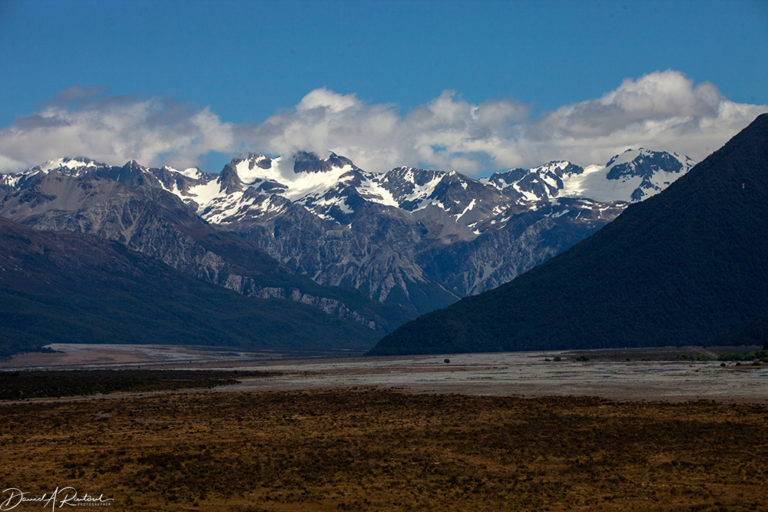
The Southern Alps run down the spine of the South Island, and dominate the scenery in much of it. This is a view on the road from Christchurch to the west coast of that island, via Arthur’s Pass, Midsummer snow is still on much of the alpine landscape, and a glacial river valley is in the foreground.
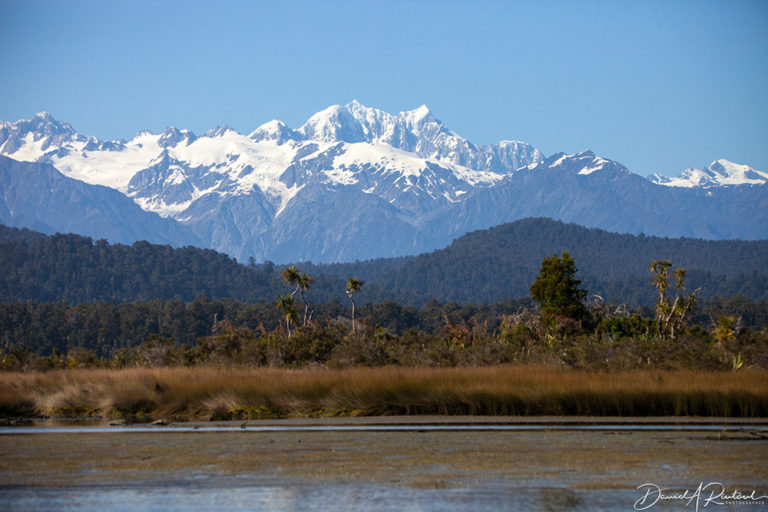
Another view of the Southern Alps from the lagoon at Ōkārito, on the west coast of the South Island. The tallest peak there is Mt. Cook (Aoraki), which is not tall (3,724 meters, or 12,218 feet) by most standards, but in that far southern latitude, it is more than tall enough to have many glaciers and snow year-round. The lagoon is a shallow estuarine wetland, and is the only breeding site for the rare White Heron (kōtuku). The tiny town of Ōkārito (population 32) is also the site where you can book a tour to see the rarest of the kiwi species, the rowi (aka Little Brown Kiwi) which has a stable population in the surrounding forests thanks to intensive management and trapping of mammalian pest species. If you happen to do that in the future, please give my regards to Ian Cooper, who owns the tour business and has a passion for kiwis that is unmatched in my experience.
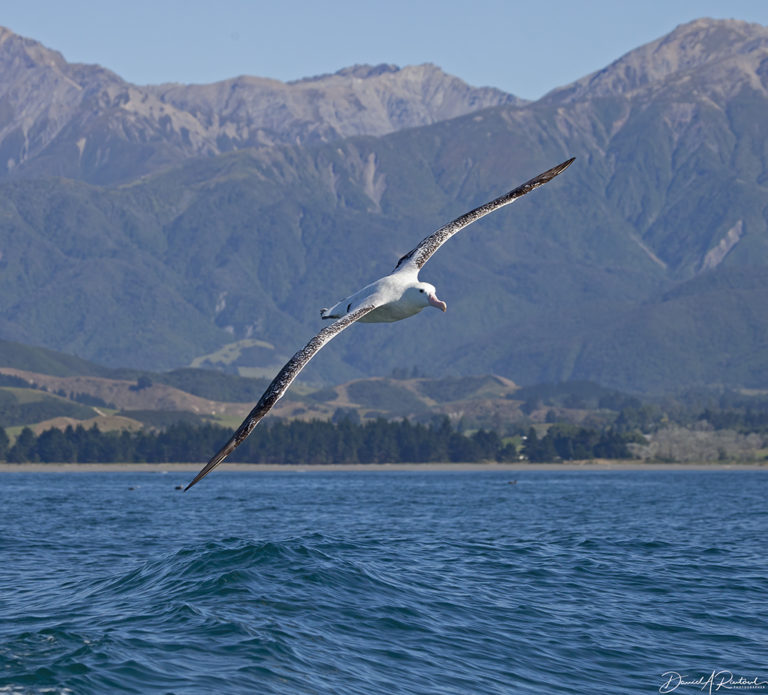
Our final view of the Southern Alps is from the east side of the island, near Kaikōura, and includes one of the best reasons to visit that town, a Wandering Albatross (Diomedea exulans). Due to a fortunate geological configuration, the sea around that town has upwelling currents rich in food, which attracts both seabirds and whales. Typically one has to be far out to sea to find an albatross; here you can see several species from a boat that ventures only a mile or two from shore. I know you are wondering, so I can tell you that there will be more albatross pictures in the next installments of this OTR series.
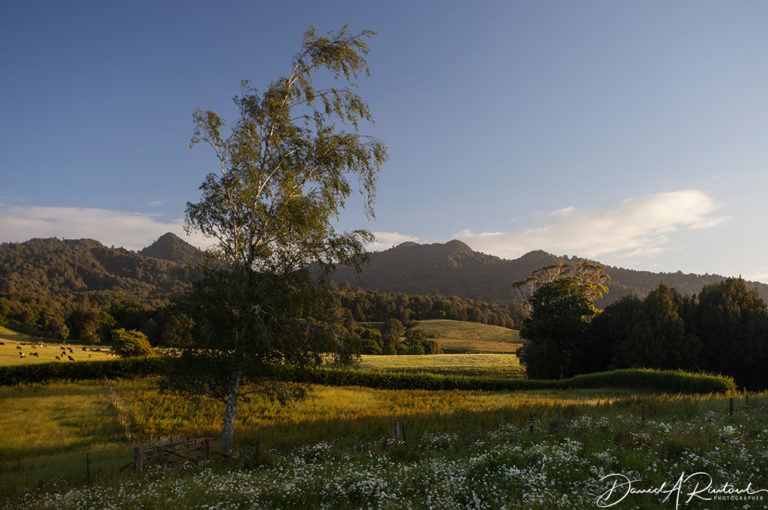
The North Island also has mountains, including this one, Maungatautari, aka Sanctuary Mountain. This is a fenced wildlife sanctuary, one of the first in the country, where native birds and plants can thrive, thanks to a 47 km encircling fence that excludes mammals. Incredibly, this entire enterprise is the result of a citizen initiative, and is still administered and funded by a non-governmental community board.
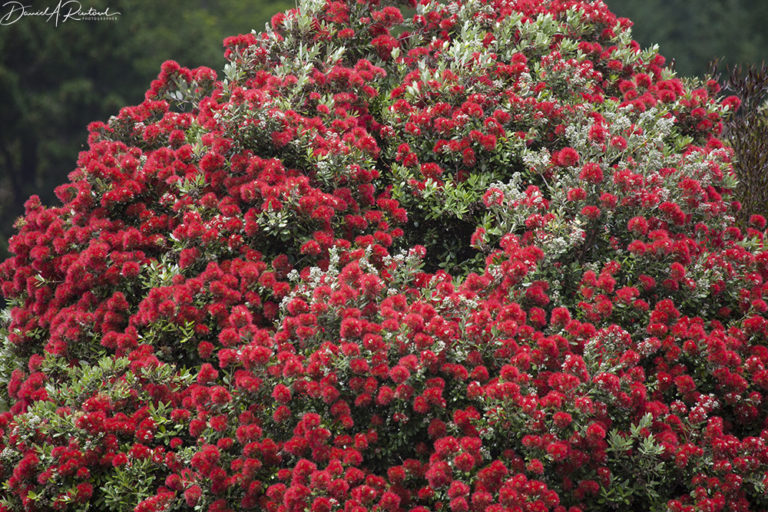
Christmas in New Zealand is the time when the native pohutukawa (Metrosideros excelsa) trees bloom extravagantly, and it is easy to see why they are also called New Zealand Christmas trees. This fine specimen was in Nelson, but the species is widely distributed and can be seen in most coastal cities in the country.
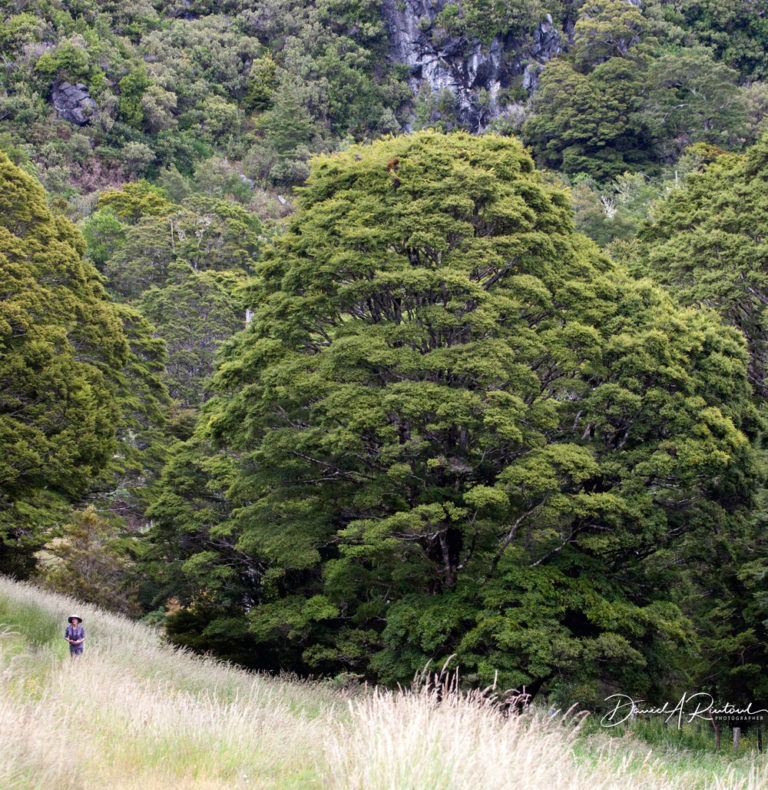
Southern beech trees are another relic from Gondwanaland, a genus (Nothofagus) of 43 species found only in the Southern Hemisphere, including South America and Australia. They are not closely related to the beeches of the Northern Hemisphere. These magnificent specimens, with Elizabeth for scale, were on the northern part of the South Island.
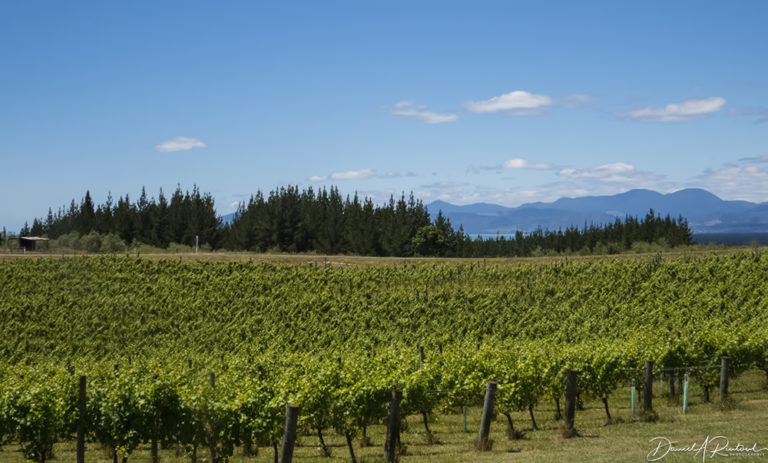
New Zealand also has a thriving wine industry, producing some world class white wines, most notably Sauvignon Blancs, Pinot Gris, and Reisling. This is the Mahana Winery in the Nelson-Tasman district near Moutere. Many other fine vineyards are about 100 km east of here in the Marlborough District. New Zealand seafood paired with a local wine can be quite special!
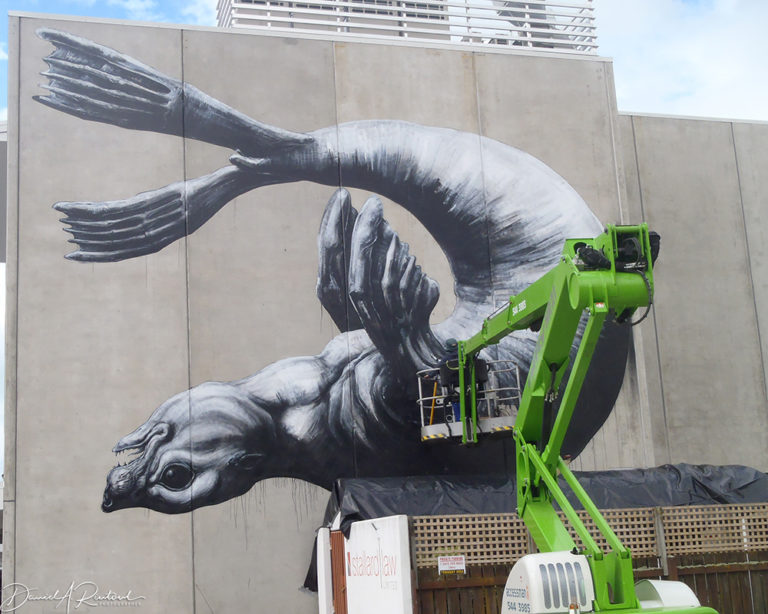
Public art in Nelson NZ. The painter was applying the finishing touches to this interesting mural of a NZ Fur Seal (Arctocephalus forsteri or kekeno).
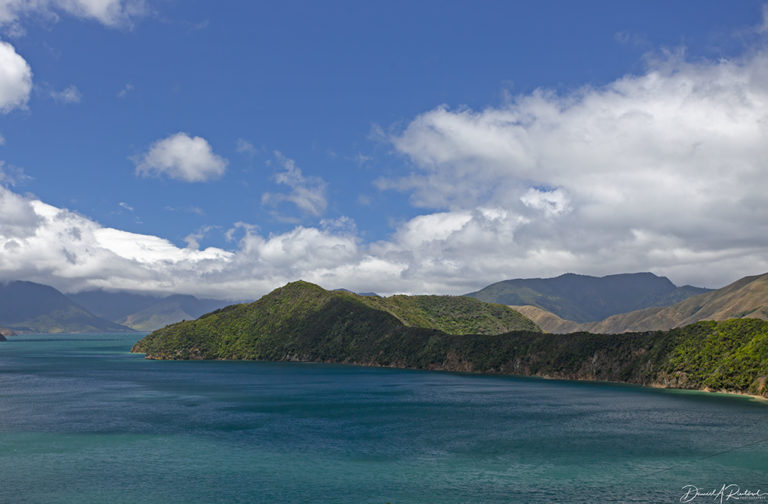
The Marlborough Sounds are a very scenic array of ocean, islands, and peninsulas at the northern tip of the South Island. This is a view of Maud Island, a wildlife sanctuary that is home to the endangered Maud Island Frog, several Takahes, and Scirocco, the Kakapo parrot made famous by David Attenborough’s filmmaking crew.
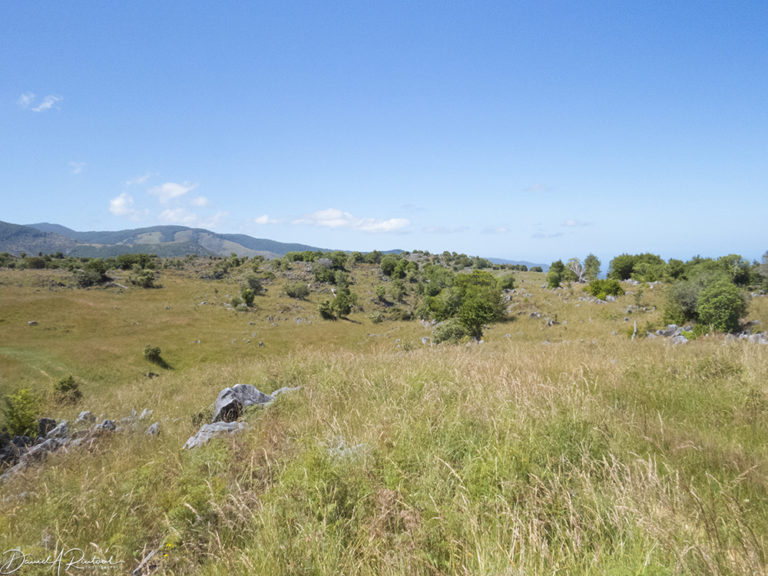
Finally, although we did not make efforts to see locations that were featured in the Lord of the Rings films, it is difficult to escape them. This is Takaka Hill, where some of the scenes from The Hobbit were filmed. It is also the site of many caves and sinkholes, some of which contain bones of some of the extinct birds known as moas. The birds were flightless, and if they fell into a cave in this karst landscape, they usually perished in that cave.

Van Buren
Thank you for sharing these wonderful photos.
sab
No wonder your nym is albatrossity. That bird is amazing.
OT: after three weeks of cloudy skies the skies here in Ohio cleared. 800 year planet conjunction is over. Oh well.
Different cultural references. I majored in English history. I thought “Wow, back almost to the Magna Carta!” My sister, Chinese art historian, thought “Wow, back to the Sung Dynasty.”
I thought “Huh?”
She actually saw it. I had cloud cover. Make of that what you will.
Zinsky
Wow! Stunning pictures! I know that a lot of the outdoor scenes in The Lord of the Rings film trilogy by Peter Jackson were filmed in New Zealand, all of which were breathtaking. I hope that someday my wife and I can go there. Merry Christmas and thank you for sharing!
JPL
Moas are often featured in the NYTimes crossword puzzles. Your pictures and stories are such a treat to read in the morning. Thank you.
Sm*t Cl*de
If you drop your camera in New Zealand and it accidentally takes a picture, a weka will grab the camera and run away with it.
Van Buren
@Sm*t Cl*de: If it’s a small camera, a weta might do the same.
p.a.
Great stuff. NZ is on my list. Coworker’s son had, in the 1990’s, possibly best job ever: Northern hemi summer Alaska fishing guide, So hemi summer guide in NZ.
Mary G
I had never heard of this incident before. It is hilarious comedy gold, not least because Stephen Fry is there giving the commentary. I am still chortling after watching it twice.
ETA: The pictures are fantastic as always. I like the albatross, the Christmas tree, the beeches, and Maud Island.
WaterGirl
Oh my gosh, that third photo in KAIKOURA!
The blue of the water, the bird, the sky, everything. And the “Christmas tree”! Lovely way to start the morning.
Chris T.
@WaterGirl: The pohutukawa (Christmas Trees) are spectacular. The blooms don’t seem to last very long though. I suppose in a way that makes them even more special.
Sandia Blanca
@p.a.: My Alaskan relatives love to go to New Zealand, halfway around the world for them. They’ve currently been there for all of 2020, having been “trapped” when the pandemic hit. Not such a hard life for people who are semi-retired from their self-employment. Currently swanning around enjoying the lovely summer weather.
Paul in St. Augustine
The topography of the country is amazing. Mt. Cook’s peak is a scant 5 miles inland from the Tasman Sea. Try to imagine that from any beach in the US you have visited. Sea level to 12,000 feet in 5 miles. On my first visit to the country, one of the activities I participated in was a glacier hike on the Franz Josef Glacier. We had to walk through a tropical rain forest to arrive at the starting point of the hike. As great as these pictures are, they do not do justice to being there. Imho, New Zealand should top everyone’s bucket list.
stinger
Thank for these amazing photos. All spectacular, but as a tree hugger I can hardly take my eyes off that beech. “Relic from Gondwanaland” makes my head spin.
Chris T.
It is indeed amazing.
The Kaikoura coast seems even more amazing to me though. The mountains may not be as tall but they nearly drop directly to the ocean (this is kind of a problem at times, like that last round of earthquakes) and then the sea-bottom drops off rapidly, hence that upwelling and all the whales and seabirds.
Hawaii is … different, but similarly spectacular, with its volcanoes rising out of the ocean.
Albatrossity
@Chris T.: Geologically, Kaikoura is fascinating. It is on the edge of two tectonic plates, and that deep underwater canyon that forces upwelling that attracts whales and albatrosses close to the shore is part of the trench system associated with that rift boundary. So it is an earthquake prone zone, even more so than the rest of the South Island. Lots of good information and maps here.
JanieM
The Southern beech tree is indeed magnificent, and all the pics are gorgeous and enticing. But to me the star of this show is the albatross. No wonder it figures in so many legends and stories, it’s breathtakingly beautiful in flight.
And to this Ohio native transplanted to Maine, 12,000+ feet seems pretty tall. There’s a rumor that all things are relative…. ;-)
pat
Did no one notice the resemblance of the “Christmas tree” to the representations of the Corona Virus?
Lovely photos. Thanks.
J R in WV
Wonderful photos of a beautiful place. Friend of ours spent 3 months cycling around the NZ islands with her son. Recumbent trikes custom built down in RTP, where son works as geneticist / programmer in a large greenhouse. Stories were great. Beer was great. People were great. Pics were good, but not this good!
Thanks again! No surprise more Albatross birds will appear! Thanks in advance!
Johnny's mom
I have never suffered from wanderlust, but New Zealand is intriguing and beautiful. Thank you for the map – very helpful.